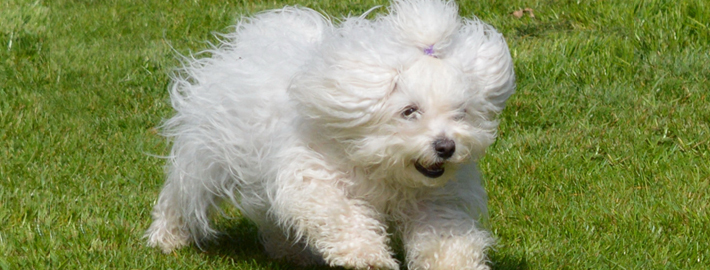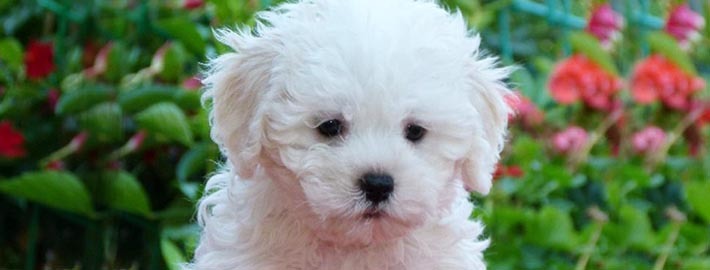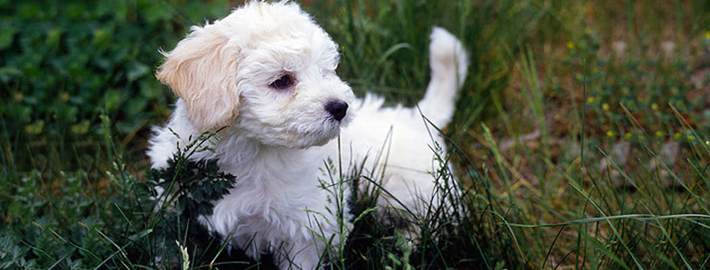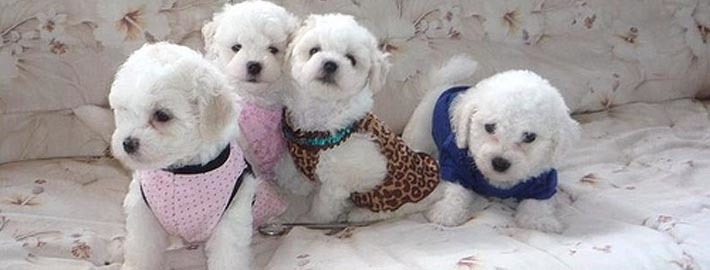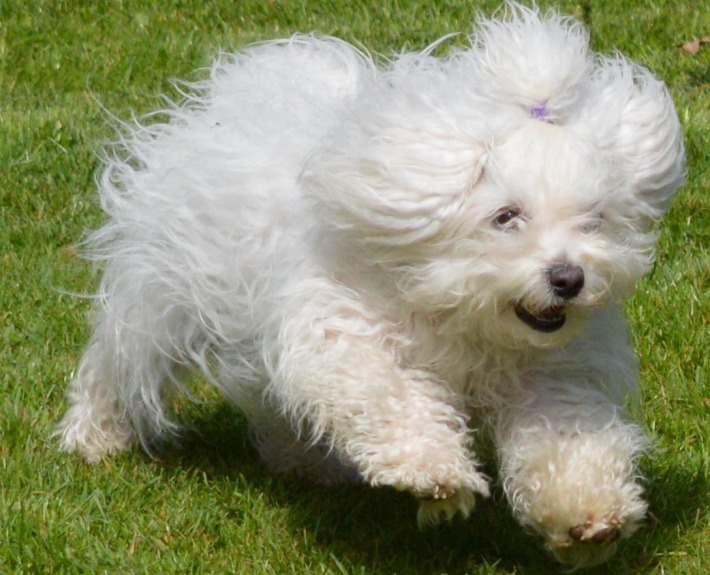What makes the Bolognese Unique?
Members of this breed make excellent companions for families. However, these crafty white dogs can easily charm and subsequently rule the household if one is not careful.
Page Contents
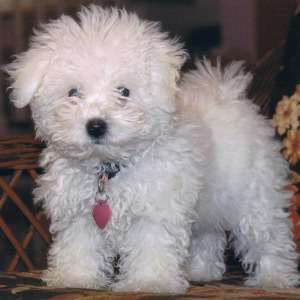
Is the Bolognese Right For You?
These little companion dogs are quite patient. Members of this breed typically have close relationships with their owners and will follow them throughout the house. These dogs are also wonderful around children and friendly towards other animals, but they also get along fine as the only canine in the house.
Although these dogs are quite playful, they are not especially energetic and may gain weight rapidly if they do not get enough exercise. Play, either indoors or in a fenced-in yard, will take care of much of their activity needs but members of this breed still have to be walked on a daily basis.
In 5 Words
- Reserved
- Serious
- Docile
- Loyal
- Enterprising
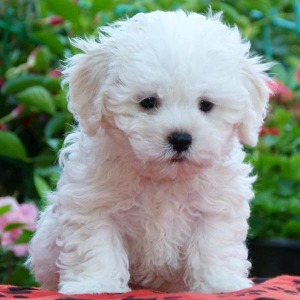
Characteristics
Learn About the Bolognese
Description
General Description
These petite dogs have square-shaped bodies with an athletic build and stocky figures. They have oval skulls, well-developed jaws, and large muzzles. Although they are mostly white dogs, the rims of their eyes, lips, and noses should be black. Dogs with depigmented noses as well as those of other colors will be disqualified from the show ring. Bolognese dogs have teeth that are aligned in an even fashion. They also have lengthy, high-set ears. These dogs carry their curved tails over their backs. Their tails should not be shortened and they should not be tailless as both of these traits are considered to be disqualifying flaws in the show ring.
Size
Fédération Cynologique Internationale standards state that male dogs of this breed should measure between 27 and 30 centimeters. The females are somewhat smaller at 25 to 28 centimeters. Average weight for the whole breed is between 2.5 and 4 kilograms. It is considered a serious fault for show animals to be more than 3 centimeters over or under the proscribed heights.
Coat
White is the only acceptable coat color. Even dogs with speckles or flecks of other colorations will be disqualified from the show ring. Breed standards for the Fédération Cynologique Internationale call for the dogs to be completely “covered with a pure white coat [that is] long and fluffy.”
Short History of the Bolognese
The Mediterranean basin has been home to a number of small, white dog breeds for over two thousand years including a variety that is thought to be native to the town of Bologna in Italy and draw its’ name from the town. Members of the Bolognese breed have been known to exist since the early Middle Ages but were especially popular during the Renaissance. Cosimo de Medici is even known to have gifted several fellow nobles with these dogs as pets on his trip to Brussels. Bolognese dogs were also depicted in artworks by Goya, Watteau, and Titan as well as on several tapestries dating back to the 1600s. However, the dogs’ fortunes eventually went into a decline until breed enthusiasts brought them back to the forefront in much later years. In 1990, Bolognese dogs officially made their way to England and were entered into the country’s breed register. Eleven years later, members of this breed were allowed to participate in all English dog shows and they made an appearance at an international event the following year.
Temperament
These little companion dogs are quite patient. Members of this breed typically have close relationships with their owners and will follow them throughout the house. These dogs are also wonderful around children and friendly towards other animals, but they also get along fine as the only canine in the house. Although they are usually amicable around strangers, they may nonetheless limit themselves to polite interactions and nothing more. Early socialization is a good way to prevent them from becoming shy, which is considered to be a breed fault. Bolognese will certainly bark to let their humans know that someone is at the door or if something warrants their attention, but they are not prone to barking overmuch. In general, these dogs will take their cues from their owner. Being warm and comfortable is of utmost concern for members of this breed as they may prefer to spend a great deal of time either sitting on their owner’s lap or snuggled up in blankets.
Caring for Your Bolognese
General Health
Bolognese dogs are prone to a number of health concerns that may arise from time to time. Bone problems are common, either on their own or as the result of an acerbated condition. Hip dysplasia is a common ailment that is the result of poor genes. It can be corrected through surgical procedures but, if left untreated, it can cause arthritis to develop later on in a dog’s life. Luxating patelleas, kneecaps that don’t stay properly in place, is yet another problem for all small dog owners. Legg-Calve-Perthes disease may also be present in members of this breed. This ailment results in a reduced blood supply that can ultimately shrink a dog’s thigh bone. Owners should immediately take any puppies that start limping to the vet as this is when the condition normally first appears. Corrective surgery is usually required in such cases. Periodontal disease and obesity have also been known to occasionally show up in members of this breed.
Care
Daily
Bolognese who are allowed to laze around can quickly become obese. Therefore, owners will need to be sure their dogs are walked on a regular basis. A short trip around the neighborhood will usually suffice. Daily grooming is another important aspect of their care as these dogs have lush coats that can otherwise become matted or tangled.
Weekly
Bolognese dogs are particularly prone to periodontal disease as is the case with a number of small dogs. Dental problems can easily be prevented with regular tooth brushing.
Monthly
These dogs should be professionally groomed at least once a month. All dogs also will need to be given parasite prevention medications on a regular, usually monthly, basis.
Grooming & Bathing
Bolognese dogs shed very little. However, hair loss is further reduced and their appearance is enhanced when they are kept appropriately groomed. These dogs are also considered to be an excellent choice for allergy suffers.
Exercise & Training
Bolognese dogs are intelligent and easy to train. Members of this breed have a strong desire to please their owners and a similar need for mental stimulation, which make teaching them a simple process. Although these dogs are quite playful, they are not especially energetic and may gain weight rapidly if they do not get enough exercise. Play, either indoors or in a fenced-in yard, will take care of much of their activity needs but members of this breed still have to be walked on a daily basis. These dogs are less likely to misbehave if they are encouraged to get out and about.

